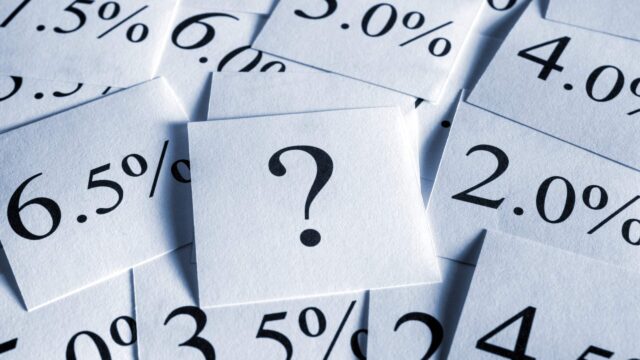
Navigating through the educational journey in Primary 5 (P5) introduces students to new Mathematical challenges that are integral to their academic development. Among these, mastering percentages emerges as a pivotal chapter—a fresh terrain not covered in earlier Primary levels.
This introduction to percentages marks a critical point in a student’s Math education, laying the groundwork for more complex applications in higher grades. From calculating discounts during shopping to understanding interest rates in banking, these practical applications underscore the importance of mastering this subject matter.
But here’s where things get a little tricky.
Beyond simply mirroring real-life scenarios, students encounter a range of common percentage problems that test their ability to apply multiple Mathematical concepts effectively. Therefore, to excel, understanding how to seamlessly integrate concepts like fractions, decimals, and percentages is crucial. Mastery of these problems is not only about knowing the formulas but also about strategically working through multi-step problems to unearth solutions that reflect a deep comprehension of the material.
So, what are the common Math questions and concepts that students must be ready to tackle with confidence and precision?
1. Calculating Percentages of a Quantity
One fundamental concept in Primary 5 Math is calculating a percentage of a quantity. Thus, your child might be tasked to find out the specific number of an object (or any other noun) when given a total quantity and a percentage representing that object.
Example Question:
In a school of 400 students, if 40% are boys, how many girls are there?
Step-by-Step Solution:
Boys → 40⁄100 × 400 = 160
Girls → 400 – 160 = 240
Therefore, there are 240 girls in the school.
Helpful Tip: Remember, “of” in percentage problems implies multiplication, making it easier to calculate the part from the whole.
2. Percentages with Remainders
Handling percentages in stages, especially when remainders are involved, requires careful step-by-step computation to ensure accuracy. This means that a typical Math problem might involve dividing a group into several categories based on percentage criteria.
Example Question:
At a concert, 200 tickets are sold. Initially, 30% are sold to adults. Of the remaining tickets, 50% are sold to teenagers, and the rest to children. How many tickets were sold to children?
Step-by-Step Solution:
Adults → 30% of tickets sold
= 30⁄100 × 200
= 60
Remaining tickets → 200 – 60 = 140
Teenagers → 50% of the remaining tickets
= 50⁄100 × 140
= 70
Children → 140- 70 = 70
So, 70 tickets were sold to children.
Helpful Tip: A common mistake is to misapply percentages to the original total rather than the remaining amount after each stage. Always recalculate the base for each percentage step to avoid errors.
3. Working with GST (Goods and Services Tax)
Understanding Goods and Services Tax (GST) is another crucial component for students when studying percentages. This tax, calculated as a percentage of the price of goods or services, must be added to the original cost to determine the final price. Students need to be able to perform this calculation accurately.
Example Question:
Leo buys a new textbook priced at S$50 and will be charged 9% GST at the counter. Calculate the total cost Leo has to pay for his textbook.
Step-by-Step Solution:
GST → 91⁄100 × S$50 = S$4.50
Paid → S$4.50 + S$50 = S$54.50
Thus, Leo pays a total of S$54.50 for the book, including GST.
Helpful Tip: Remember, GST is always an additional cost to consider when purchasing.
4. Understanding Simple Interest
Simple interest is another straightforward but vital financial concept, calculated as a percentage of the principal amount over time. Such calculations are frequently used in financial contexts, where students need to determine interest earned on savings or interest accrued on loans.
Example Question:
Emily saves S$1,000 in a bank offering 3% simple interest annually. How much will she have in her savings account after one year?
Step-by-Step Solution:
Interest (1 year) → 3⁄100 × S$1000 = S$30
Savings (after 1 year) → S$1000 + S$30 = S$1030
Emily will have S$1030 in her account after one year.
Helpful Tip: Interest is an additional amount that grows on the initial deposit.
5. Calculating Discounts
Calculating discounts is another useful skill, especially in shopping scenarios where percentage reductions are common. Students will frequently encounter word problems involving discounts, requiring them to calculate the final price after a percentage reduction.
Example Question:
A bicycle priced at S$200 is on sale with a 25% discount. Determine the sale price.
Step-by-Step Solution:
Discount → 25⁄100 × S$200 = S$50
Bicycle (after discount) → S$200 – S$50 = S$150
The discounted price of the bicycle is S$150.
Helpful Tip: Always remember that a discount decreases the original price, enhancing savings on purchases.
Tips for Mastering Percentage Problems

Given the vast range of percentage problems that Primary 5 students will have to master in their Math curriculum, building proficiency in this area is a must to enhance academic performance.
Here’s how you can strengthen your grasp on the subject matter and calculations to conquer percentage challenges:
- Fraction-Percentage Conversion: Understanding how to switch between fractions and percentages is fundamental. This skill aids in interpreting data more fluidly, as many percentage problems stem from fractional relationships.
- Practice Makes Perfect: Like any Math concept, mastery of percentages comes with consistent practice. Engage with a variety of worksheets and apply these concepts in real-life scenarios to develop a deeper understanding.
- Understanding the Percent Symbol: The percent symbol (%) represents a part per hundred, a basic but vital concept that underlies all percentage calculations.
- Breaking Down Complex Problems: When facing multifaceted percentage questions, decompose them into simpler parts. This method reduces errors and enhances problem-solving efficiency.
- Visual Aids and Models: Utilise bar models or diagrams to visualise percentage distributions. This approach can simplify complex problems and aid in better comprehension.
- Checking Answers: Always review your solutions for accuracy and plausibility to ensure they make practical sense.
- Seeking Help: Never hesitate to ask for guidance from teachers or tutors when difficulties arise. A little help can go a long way in overcoming hurdles and understanding concepts clearly.
Navigating through percentage problems successfully often means going beyond merely understanding formulas—it requires integrating knowledge with practical application. At TLS Tutorials, our focus is not just on mastering calculations but on fostering an in-depth understanding of how to apply these skills in real-world scenarios. Therefore, as a premier Primary Math tuition centre in Singapore, our specialised P5 Math tuition programmes are designed to tackle challenging Math questions and boost confidence and competence in handling percentage problems effectively.
Join us and transform your Mathematical challenges into triumphs!
